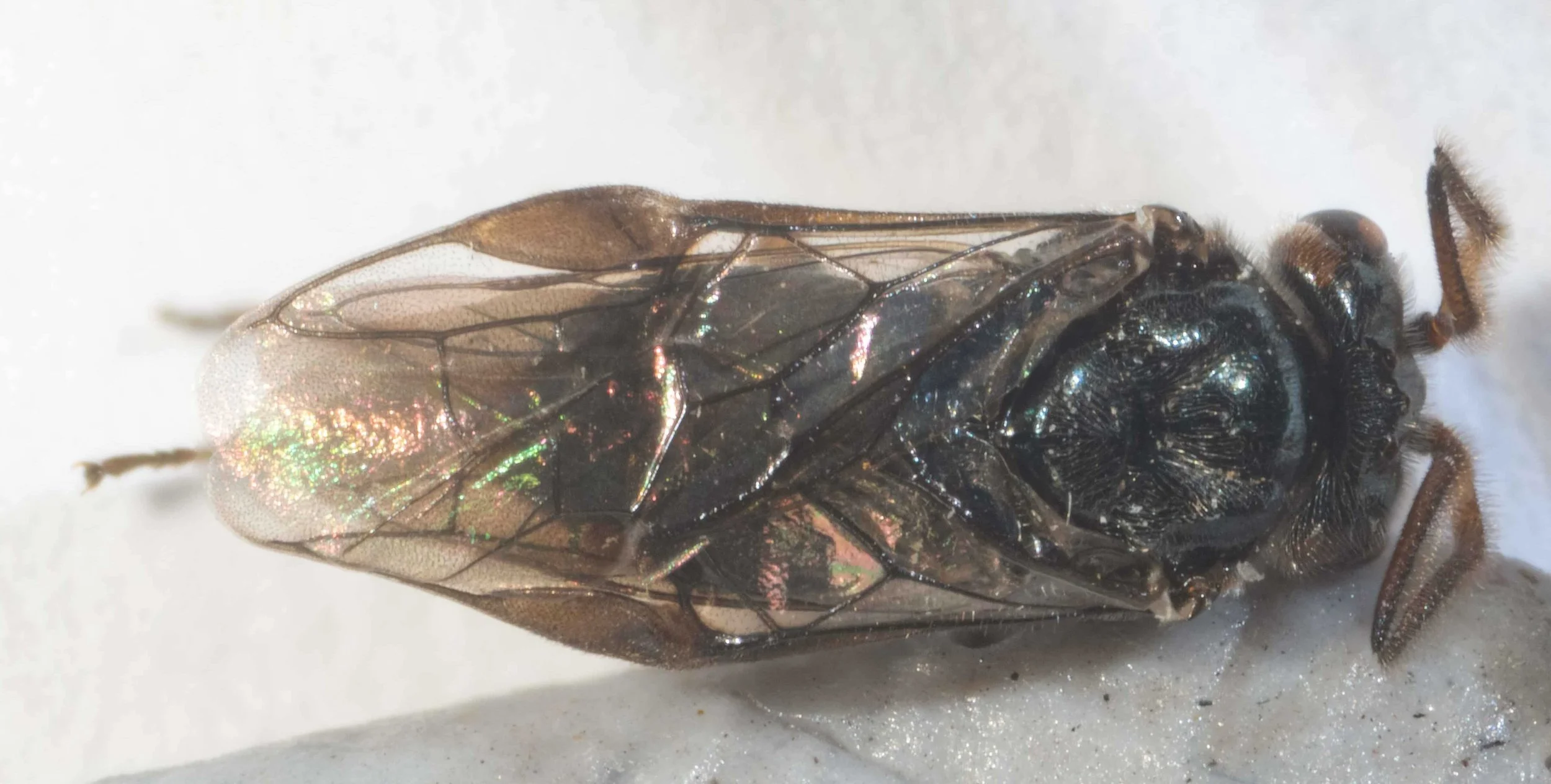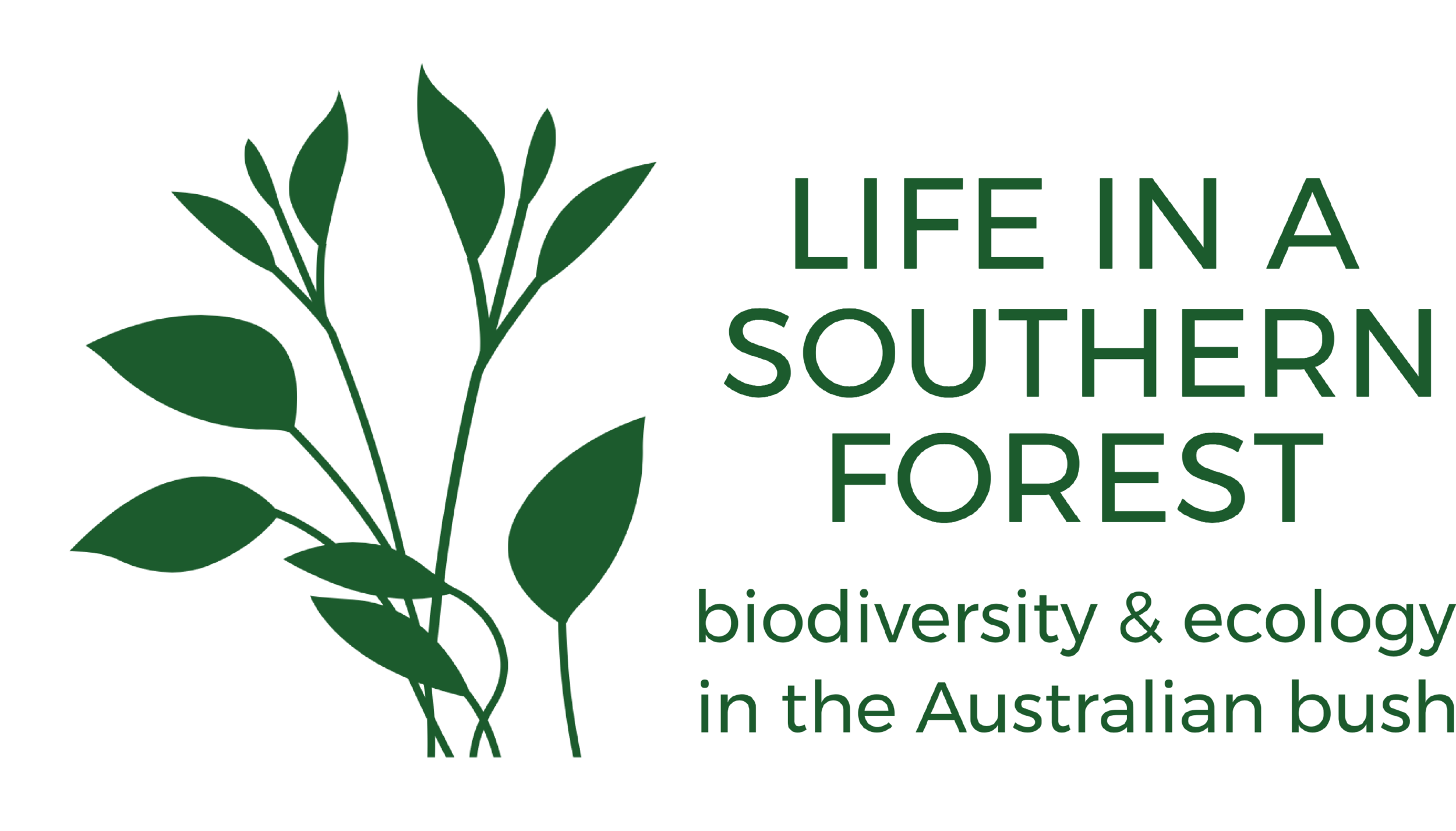
body length 4.8mm
antennae 3 segmented, flagellum bifurcated, setose; scape black, pedicel blackish-orange; flagellum basal half orange, apical half blackish-orange
labrum, inner orbits, genae, mandibles (except for black tips) orange
ventral side of thorax and abdomen metallic blue, except for orange apical segment (hypopygium) of abdomen, unpunctured
legs: coxae, ventral side of all legs black; femora, ventral side of all legs black, apex of fore and mid legs orange, apical ¼ of hind legs orange; tibiae and tarsi of all legs orange, apex of hind tibiae blackish, dorsal side of all tarsi blackish
pre-apical spur on mid and hind tibiae

body length 4.9mm
genae orange, vertex black
proboscis shorter than head, glossa shorter than prementum
lateral side of thorax, mesonotum, scutellum and abdomen black; tegula blackish-orange; pronotum black with thin posterior orange rim
legs: all coxae and femora black, except apex of fore and mid femora orange, apical 1/5th hind femora orange; all tibiae and tarsi orange, tarsi somewhat infuscated, especially in fore legs

distance between hind ocelli much greater than distance between ocellus and back of head
vertex black, genae orange
mesoscutum, scutellum bright metallic blue, unpunctured
fore wings hyaline, stigma brown, venation dark brown

anterior abdomen and thorax, viewed dorsally after removal of wings and legs
all terga bright metallic blue, except posterior of tergum 1 pale yellow; unpunctured

antennal flagellum bifurcated, setose; orange , blacked distally
vertex, face black; ventral half of clypeus, labrum, mandibles, inner orbits, genae orange
galea orange, stipes black, palps black; galea shorter than stipes

scape black and orange; pedicel orange; flagellum orange
face, clypeus black; labrum, mandibles, inner orbits, genae orange
galea orange, stipes black, palps black

lateral view of abdomen
all segments bright metallic blue, except for orange apical segment (hypopygium)

lateral view of abdomen and hind legs
all abdominal segments bright metallic blue, except for orange apical segment (hypopygium)
hind coxae and basal ¾ of femora bright metallic blue; tibiae orange

ventral view of abdomen
all segments of venter bright metallic blue, except for orange apical segment (hypopygium); orange harpe, tongue-shaped cusps used to grip base of female genitalia during copulation, protruding from rear of body

genitalia dissected from PW053 - close similarity to drawing of T. nitidus male genitalia in Fig. 19, D-F Malagon-Aldana et al (2021), see Reference images below

genitalia dissected from PW053 - close similarity to drawing of T. nitidus male genitalia in Fig. 19, D-F Malagon-Aldana et al (2021)

fore wing
hyaline; stigma and venation brown

hind wing
hyaline; stigma and venation brown













